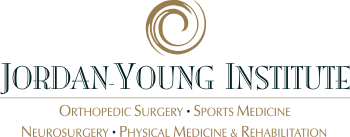Spine
- Anatomy
- Conditions
- Procedures
Spine Anatomy
Cervical Spine Anatomy
The spine, also called the back bone, plays a vital role in stability, smooth movement and protection of the delicate spinal cord. It is made up of bony segments called vertebrae with fibrous tissue called intervertebral discs between them. The vertebrae and discs form the spinal column from the head to the pelvis, giving symmetry and support to the body.
Thoracic Spine Anatomy
Thoracic spine is the central part of the spine, also called as dorsal spine, which runs from the base of the neck to the bottom of your rib cage. The thoracic spine provides flexibility that holds the body upright and protects the organs of the chest.
Lumbar Spine Anatomy
The spine, also called the back bone, plays a vital role in stability, smooth movement and protection of the delicate spinal cord. It is made up of bony segments called vertebra with fibrous tissue called intervertebral discs between them. The vertebra and discs form the spinal column from the head to the pelvis, giving symmetry and support to the body.

Degenerative Spine Disease
Degenerative spinal conditions are a group of disorders that causes loss of normal structure and function of the spine. These disorders may be caused due to ageing, infection, tumors, muscle strains or arthritis. Degenerative joint disease is commonly known as arthritis that affects the feet, fingers, hands, spine and weight-bearing joints. It is caused due to the inflammation of joints because the articular cartilage covering the bones may be damaged or worn out.

Disc Herniation
Disc herniation is a condition where the central nucleus pushes through the outer edge of the disk, causing a bulge that compresses the spinal nerves.
Aging, injury or trauma may cause the annulus fibrosus to tear resulting in protrusion of the nucleus pulposus. This may compress the spinal nerves and/or spinal canal.

Spinal Tumors
Spine tumor is the abnormal growths of uncontrolled tissues or cells in and around the spinal cord. Tumors can either be cancerous (malignant) or non-cancerous (benign). Some of the commonly occurring benign spinal tumors are osteoma, osteoblastoma, hemangioma, and osteochondroma. Most commonly occurring malignant spinal tumors are chondrosarcoma, Ewing’s sarcoma, lymphoma, osteosarcoma, and multiple myeloma. Tumors that begin in the spine are called as primary spinal tumors.

Spinal Deformities
The Spine or backbone provides stability to the upper part of our body. It helps to hold the body upright. It consists of a series of irregularly shaped bones appearing in a straight line. The spine has two gentle curves, when looked from the side and appears to be straight when viewed from the front. When these curves are exaggerated, pronounced problems can occur such as back pain, breathing difficulties and fatigue.

Scoliosis
Scoliosis is a condition characterized by abnormal curvature of the spine causing a deviation to one side. It causes a physical deformity making the spine look like the letter “C” or “S” instead of the letter “I”. Scoliosis can affect either the mid or the lower back, but the scoliosis of the mid back is more common. Scoliosis can occur at any age.

Fluoroscopically-guided Spinal Injections
Epidural spinal injection is a non-surgical treatment option utilized for relieving back pain. Spine degenerative conditions such as herniated disc, spinal stenosis and many others may induce back pain due to the compression of the associated spinal nerves. This pain or numbness may extend to the other parts of the body such as hips, buttocks, and legs. Doctors start with non-surgical methods to treat back pain and epidural spinal injection is one of these preferences.

Minimally Invasive Spinal Surgery
MISS is the latest advanced technology available to perform spinal surgeries through small, less than one inch long, incisions. It involves the use of special surgical instruments, devices and advanced imaging techniques to visualize and perform the surgery through such small incisions. MISS is aimed at minimizing damage to the muscles and surrounding structures. MISS possesses numerous benefits over the traditional spine surgery which include:

Spine Deformity Surgery
The spine or backbone provides stability to the upper part of the body. It helps to hold the body upright. It consists of several irregularly shaped bones, called vertebrae appearing in a straight line. The spine has two gentle curves when looked from the side and appears to be straight when viewed from the front. When these curves are exaggerated, pronounced problems can occur such as back pain, breathing difficulties and fatigue and the condition will be considered as deformity.

Spinal Decompression
The spinal cord passes through the vertebral column, which forms a bony protective cover. However, many conditions can cause parts of the vertebrae to compress the spinal cord or the nerves that branch out through them, leading to pain, loss of sensation and/or motor function in the part of the body supplied by the compressed nerve.
Spinal decompression is treatment to relieve pressure on one or many “pinched nerves” of the spinal column.

Spine Tumor Surgery
A spinal tumor is an abnormal mass of tissue surrounding or found within your spinal cord and/or spinal column.
